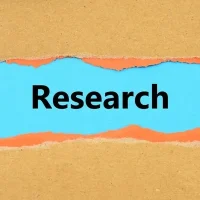The grant-making process can often seem daunting, especially for NGOs that are new to seeking funding. At its core, this process involves a series of steps that organizations must navigate to secure financial support for their initiatives. Understanding the intricacies of this process is crucial for NGOs aiming to enhance their chances of success.
Typically, the journey begins with identifying potential funders, which can include government agencies, private foundations, and corporate sponsors. Each of these entities has its own set of guidelines and priorities, making it essential for NGOs to conduct thorough research to align their missions with the funders’ objectives. Once potential funders are identified, NGOs must familiarize themselves with the specific requirements of each grant.
This includes understanding eligibility criteria, application deadlines, and the types of projects that are favored. Many funders provide detailed guidelines on what they are looking for in a proposal, which can include everything from project goals to expected outcomes. By carefully reviewing these requirements, NGOs can tailor their proposals to meet the expectations of funders, thereby increasing their chances of securing the necessary support.
Additionally, it is beneficial to engage with funders early in the process, as many are open to questions and discussions that can clarify their priorities and expectations.
Identifying the Right Grant Opportunities
Utilizing Online Databases
One effective strategy is to create a comprehensive list of potential funders by utilizing online databases such as GrantStation or Foundation Center. These platforms provide extensive information on various grants, including eligibility criteria and application processes. By leveraging these resources, NGOs can streamline their search and identify opportunities that are a good fit.
The Power of Networking
In addition to online databases, networking plays a vital role in uncovering grant opportunities. Engaging with other organizations in the sector can lead to valuable insights and recommendations for potential funders. Attending conferences, workshops, and local community events can also facilitate connections with individuals who may have knowledge of available grants.
Staying Informed and Combining Efforts
Furthermore, subscribing to newsletters from relevant foundations or grant-making organizations can keep NGOs informed about new funding opportunities as they arise. By combining research with networking efforts, NGOs can enhance their chances of discovering grants that align with their mission and objectives.
Crafting a Compelling Narrative
A compelling narrative is at the heart of any successful grant proposal. It serves as the foundation upon which the entire application is built, allowing NGOs to convey their mission, vision, and the impact they aim to achieve through their projects. To craft an engaging narrative, organizations should begin by clearly articulating their mission statement and how it aligns with the funder’s priorities.
This alignment is crucial; funders want to see that their investment will contribute to meaningful change in areas they care about. Moreover, storytelling can be a powerful tool in this process. By incorporating real-life examples and testimonials from beneficiaries, NGOs can illustrate the tangible impact of their work.
This not only humanizes the proposal but also helps funders visualize the difference their support could make. Additionally, it is important to present data and evidence that supports the need for the proposed project. This combination of narrative and data creates a compelling case for funding, demonstrating both passion and professionalism.
Developing a Clear and Realistic Budget
A well-structured budget is an essential component of any grant proposal. It provides funders with a clear understanding of how their money will be utilized and demonstrates that the NGO has carefully considered the financial aspects of the project. When developing a budget, it is important to be transparent and realistic about costs.
This includes not only direct expenses such as materials and salaries but also indirect costs like administrative expenses and overheads. To create an effective budget, NGOs should start by breaking down all anticipated costs associated with the project. This can involve consulting with team members or financial experts to ensure accuracy.
Additionally, it is wise to include a contingency plan for unexpected expenses, which shows funders that the organization is prepared for potential challenges. Providing detailed justifications for each line item in the budget can further enhance credibility and reassure funders that their investment will be managed responsibly.
Building Strong Partnerships and Collaborations
In today’s funding landscape, collaboration is increasingly recognized as a key factor in successful grant applications. Building strong partnerships with other organizations can enhance an NGO’s credibility and expand its reach. Collaborations allow NGOs to pool resources, share expertise, and leverage each other’s networks, ultimately leading to more impactful projects.
When seeking partnerships, it is important to identify organizations that share similar values and goals. Establishing clear roles and responsibilities within partnerships is crucial for success. Each partner should understand their contributions to the project and how they will work together towards common objectives.
Additionally, highlighting these collaborations in grant proposals can strengthen applications by demonstrating a united front and a broader capacity for impact. Funders often look favorably upon projects that involve multiple stakeholders, as this indicates a commitment to community engagement and shared responsibility.
Submitting a Polished and Professional Proposal
The final step in securing grant funding is submitting a polished and professional proposal. This means ensuring that all components of the application are complete, coherent, and free from errors. A well-organized proposal not only reflects professionalism but also makes it easier for reviewers to understand the project’s goals and significance.
Before submission, it is advisable to have multiple team members review the proposal for clarity and consistency. Additionally, adhering strictly to submission guidelines is paramount. This includes formatting requirements, page limits, and deadlines.
Funders often receive numerous applications, so presenting a well-crafted proposal that follows their instructions can set an NGO apart from others. Finally, after submission, it is beneficial to follow up with funders if appropriate; this shows continued interest in the partnership and keeps lines of communication open for future opportunities. In conclusion, navigating the grant-making process requires careful planning and execution at every stage.
By understanding the intricacies of grant applications, identifying suitable opportunities, crafting compelling narratives, developing realistic budgets, building strong partnerships, and submitting polished proposals, NGOs can significantly enhance their chances of securing funding for their vital work. Each step presents unique challenges but also opportunities for growth and collaboration within the nonprofit sector. With dedication and strategic effort, NGOs can successfully attract the resources they need to make a meaningful impact in their communities.








































